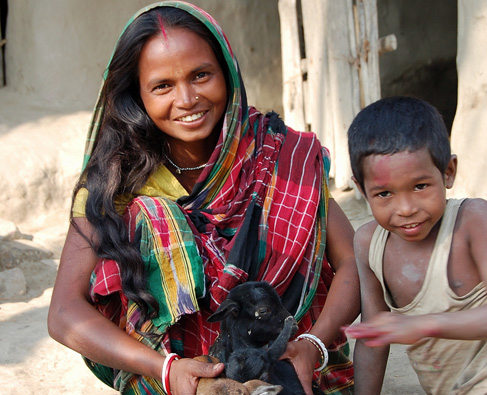It is common knowledge that the scourge of poverty is deep and wide. Two billion people live on two dollars a day or less.
One in seven people worldwide lack "food security." They are routinely hungry -- without the minimal daily calories needed to survive. In plain language, they are slowly starving to death -- a global concentration camp of hunger.
Imagine if one in seven members of Congress appeared on the Capital floor to debate the nation's business dressed each day in rags or even nude. Would the pundits and the public accept this naked reality as normal, perhaps noting in an annual report that approximately one in seven Congresspeople lacked "textile security"?
With so many impoverished people, economic development experts are grotesquely required to distinguish poverty by income class. There are not just poor people. There are the ultra poor, and the extreme poor, and the deeply-impoverished poor.
The ultra poor are hidden in the remotest villages, suffering under most desperate conditions. It is in these far off villages that New York-based organization Trickle Up does its work.
Two years ago, I moderated a panel at the Global Philanthropy Forum when the Trickle Up CEO Bill Abrams riveted the room with his common sense. Passionate and pointed, he didn't need to proselytize for his program. The program works, so the program sells itself. Listen to his words:
"The conditions of poverty and vulnerability are quite different for those living at the $2/day threshold from those at the $1/day line....Our approach combines seed capital in the form of a grant, 'livelihoods training' and savings support. The...analogy ...is much like equity in conventional finance -- or, more precisely, the "friends and family" funding that entrepreneurs in this country use to fund new ventures."
Working with local partners overseas, Trickle Up first delivers basic business training. Marketing, balancing accounts, reinvesting profits, business plan writing, figuring out consumer demand, projecting costs and profits comprise the basic curriculum.
Only after business training does each successful graduate get a seed capital grant of about $100 which covers the cost of launching a new small business -- a sewing machine to start a tailoring shop, or a table, chair and umbrella to set up a food stand or whatever else the newly-minted entrepreneur's ingenuity requires. For example, with intensive, personalized training in livestock management, Srimati Sardar (pictured here) is now able to rear animals as a profitable enterprise.

Trickle Up's anti-poverty hard work launches 10,000 new micro-businesses each year, every one of which means self-employment for a person at or below the $1/day poverty line. Ninety-one percent of Trickle Up micro-enterprises survive past the first year -- a full year of food security for families. Seventy-one percent of households improve their food intake. Ninety-one percent of participants are women. Fifty-three percent of households increase spending on education.
On World Poverty Day in October, Trickle Up's social change model will be highlighted at the Opportunity Collaboration, but you can do a bit of trickling up right now. Start by reading twelve forceful business stories from the Trickle Up portfolio, then become a venture capitalist for some of the best entrepreneurs in the world.
